[ Page 3 ]
... continued from
page 2....
page 2
page 3
page 4
Using again another KP kit reboxed by AERO , this model no #14 has markings for a Thailand Air Force and the kit for a L-39ZA was made rather straight forward as described on page 1....
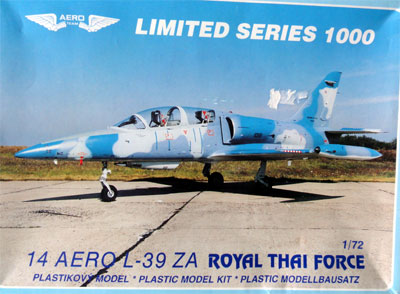 ...
...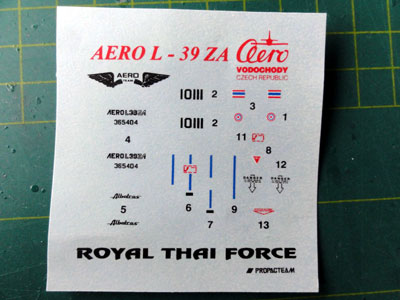
Colours were hard to establish. I
have seen on the internet that there is no standard colour system used
by the Thai Air Force and a squadron can adapt the colours during the
operational career of an aircraft. 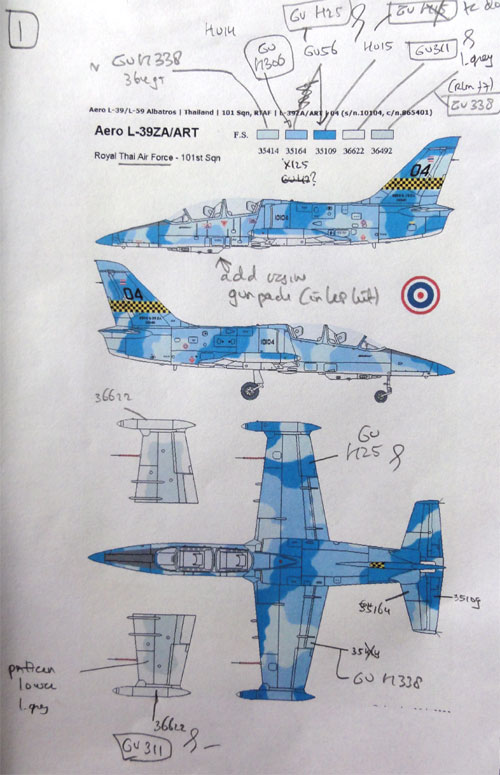
I had some first tries using the
kit instructions but was not satisfied with these looking at photos of
the real Thai L-39 aircraft. I finally settled for these modelling colours:
Lower surfaces: Gunze Sangyo 311 (about
FS 36622);
Medium Blue: Gunze Sangyo 306 (also
on the lower areas as pattern);
Light blue/ grey: Gunze Sangyo 338
(about FS 3495);
Darker blue: Gunze Sangyo H25;
Decals came from the kit (in the
AERO release).
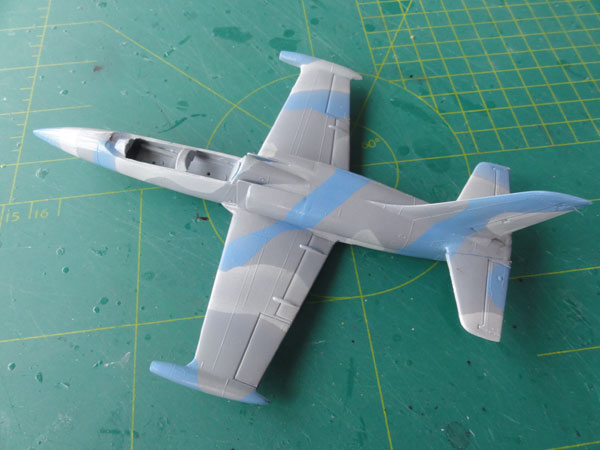
Note that the nose anti-glare panel
is light grey. This was airbrushed, after masking seen below...
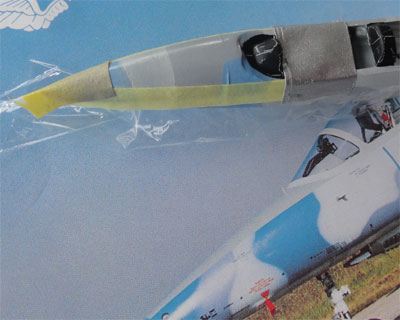
The wing leading edge pitot tubes (I made these of metal needles) are white with red stripes.
The Thailand L-39 ZA were also seen with GSh-23L 23 millimeter twin barreled cannon. This was retrieved from the Eduard kit. Also it is sometimes seen with Sidewinder AIM-9J missiles on the outboard pylons. I got the missiles from a Hasegawa Weapons set III and made a launch rail from a piece of strip to be set on the pylon. A nice addition to the model.
Some recessed panel lines got a wash
using PROMODELLER weathering wash.
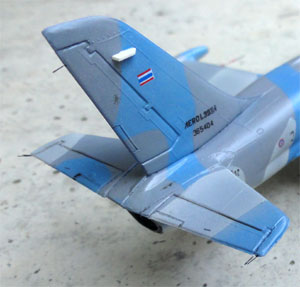 ..
..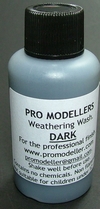
Other kit finishing was similar as
described earlier with a dull varnish
coat. Final installment was the undercarriage as well as some smaller antennas
such as on the vertical tail and also a large anti-collision light on the
spine for the Thai aircraft. On each canopy the 2 fixed handles were added
and finally static dischargers completed the model.
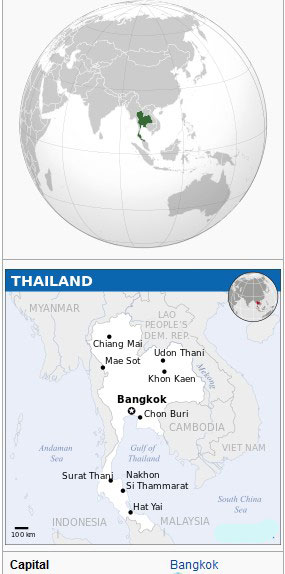 ..
..
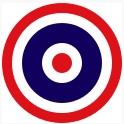 ....
....
..
The Thailand
Air Force ("Kong Thap Akat Thai") was established very early in 1913 when
Thailand was known as Siam. For more info about the Thai Air Force look at the Fantrainer page here...
The L-39ZA/ ART was procured in the 1990's with more than 30 aircraft and L-39 are operated by the 401 Light Attack Squadron from Takhli.
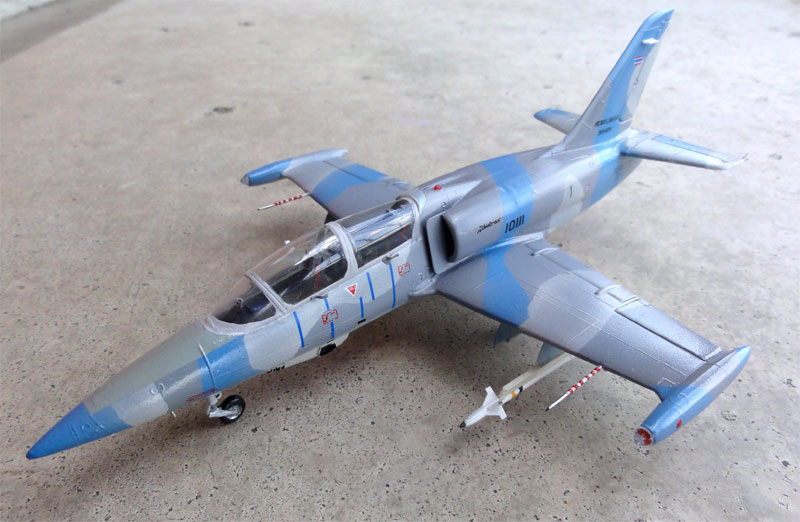

....
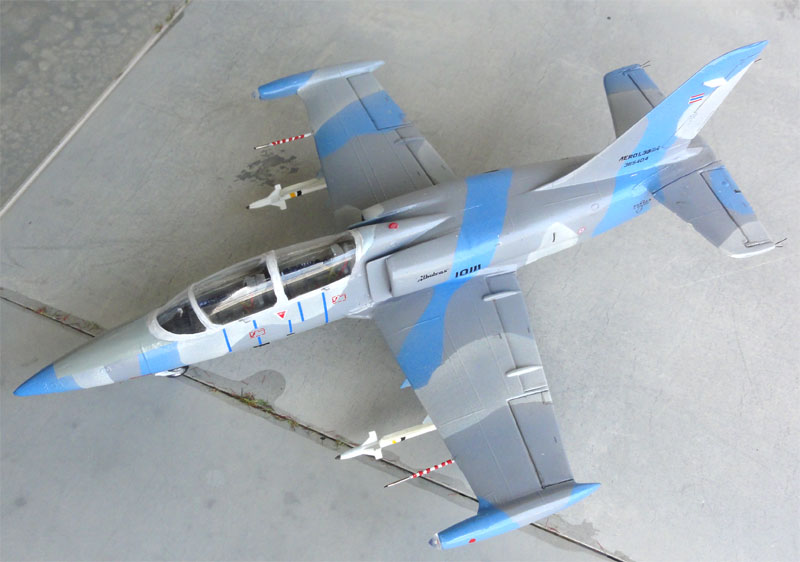
A nice model
is now in the World
Air Forces collection of a Aero L-39 ZA of the Thailand Air Force
The fourth KP kit reboxed will be made as a Chechnya Air Force L-39C and the KP kit was made as described on page 1....
I opted to droop the trailing edge
flaps. These were cut out from the KP kit wing lower and upper halves.
The forward edges of the flaps were puttied and sanded to be re-used.

.
The model was further assembled and
got a grey base coat. The flaps were than set in drooped position. A GSh-23L
23 millimeter twin barreled cannon was retrieved from an Eduard kit.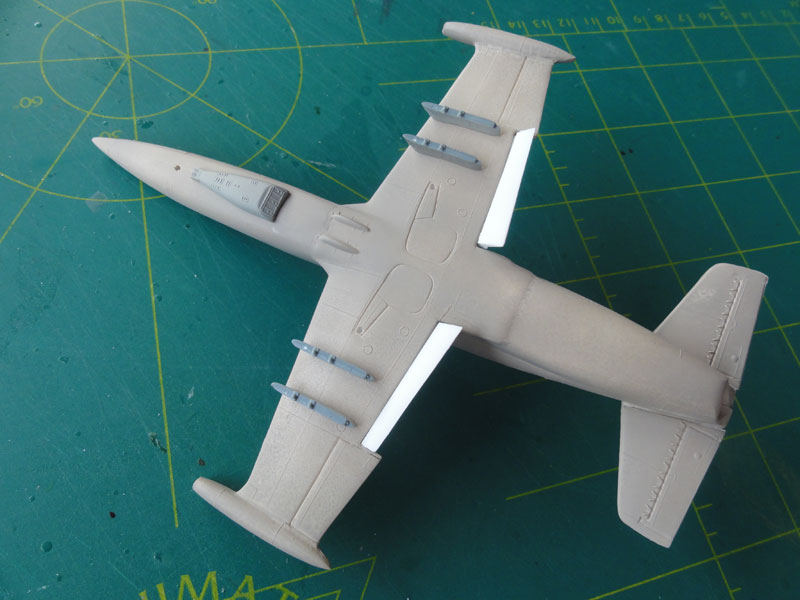
The upper flap fairings were made
from a bit of reshaped plastic rod.
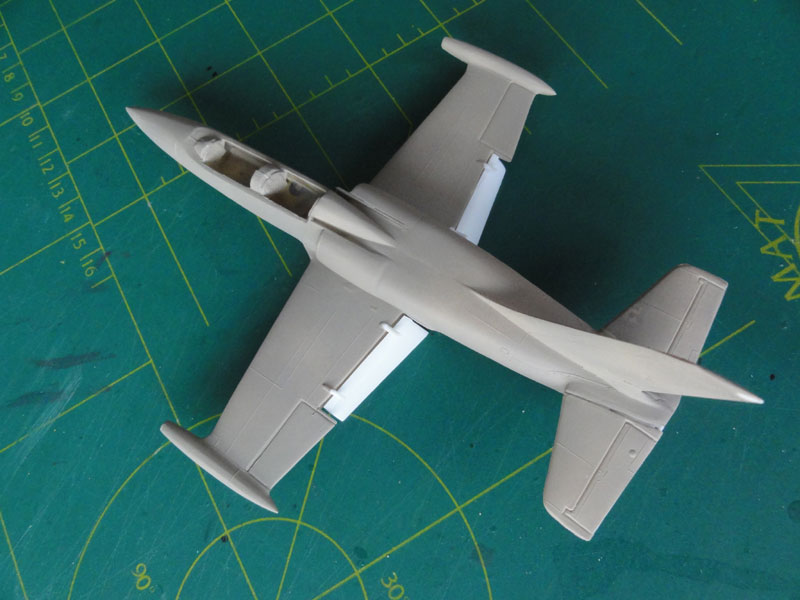
The markings are for a Chechen Air Force L-39C in the mid-nineties.
The colours were airbrushed and these acrylic paints were used:
lower surfaces: AKAN 73008 light blue;
olive drab: Gunze
Sangyo 304 (approx FS34087);
brown / beige: Revell
Aqua 314;

First various yellow panels were airbrushed
using Revell Aqua 12 "gelb" on a mat white base after these were masked.

and the result...
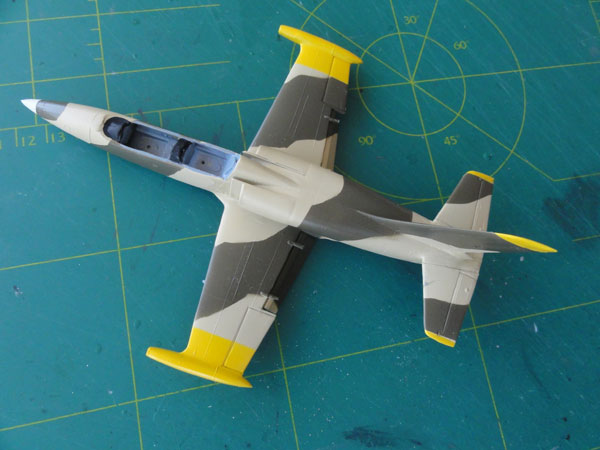
There were variations in national
insignia with red and green stars. I printed the "green" star insignia
retrieved from the internet in a few sizes on white decalsheet (from the
Bare Metal Foil company) suitable for inkjet printing with my fine inkjet
printer in colour. The prints were gloshed 5 times with Johnson
Pledge/ Future varnish with the airbrush.
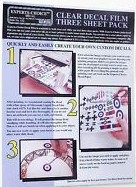
When dried for 48 hours, the six required "green" stars were carefully cut out and these home made decals applied. The remainder of the stencils came from the various L-39 kits and sheets.
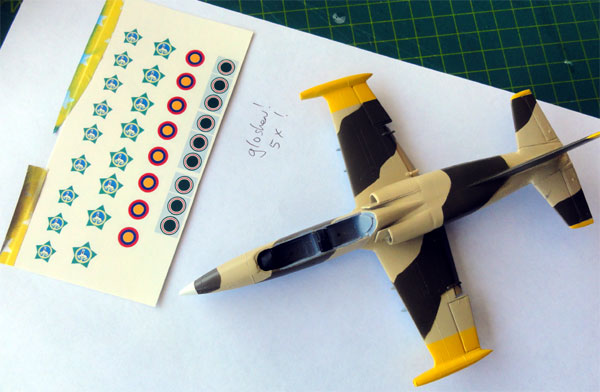
Light grey anti-glare panels were
also painted.
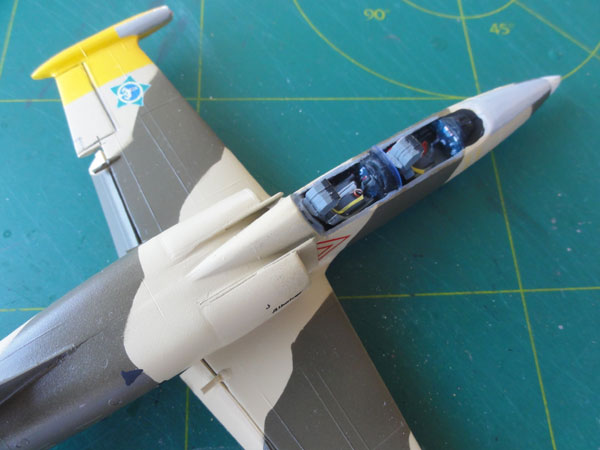
.

The cockpit got also some extra detailing,
note the transparant mid screen. Some adapted seats from the Eduard L-39
kit were installed. The canopy came from a PAVLA vacu form set. Gaps were
closed up with White Glue and when dried, painted with a fine brush in
the appropriate surrounding colours.
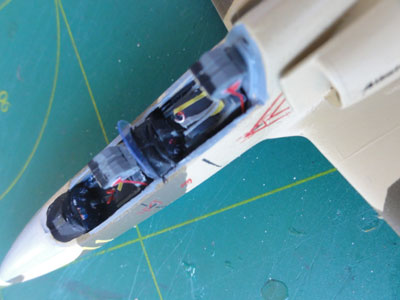 ..
..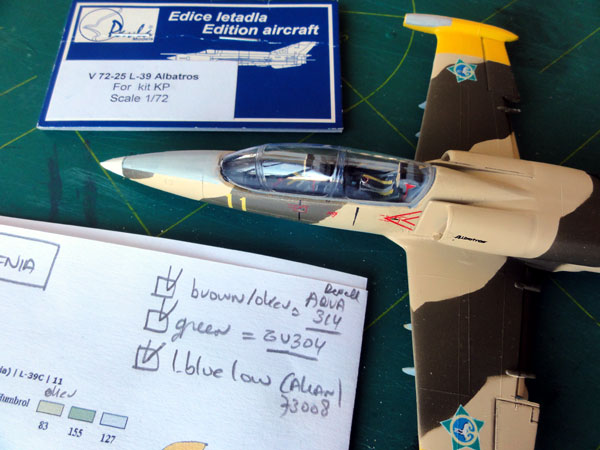
This model got a couple of UB-16 unguided rocket pods fitted on the outboard pylons; these pods came from the 1/72 Revell MiG-21 F13 kit #04346 and painted aluminium.
The wing leading edge pitot tubes made from metal needles. Other kit finishing was similar as described above for the other models with a dull varnish coat. Final installment was the undercarriage as well as some small antennas. On each canopy a fixed handle is seen so 2 in total on the port left sides, these were made from thin sprue. Adding static dischargers completed the model.
Chechnya is
a republic located in the Caucasus region in the south of the former Soviet
Union declared its independence in September 1991. A conflict between the
"Chechen Republic of Ichkeria" and Russia soon emerged. Within Chechnya
nearly 265 aircraft and helicopters had been left by the Russia at bases
Khankala and Kalinovskaya when it evacuated the Chechen Republic in 1992.
The abandoned aircraft included some 80 L-29 Delfin combat trainers, 39
L-39
Albatros trainers, three MiG-17 fighters, two MiG-15UTI trainers, as
well as six An-2 and two Mi-8 helicopters. The next decades many conflicts
between clans and neighboring countries were in the region. Today, Chechnya
is a relatively stable federal republic, although there is still some separatist
movement activity.
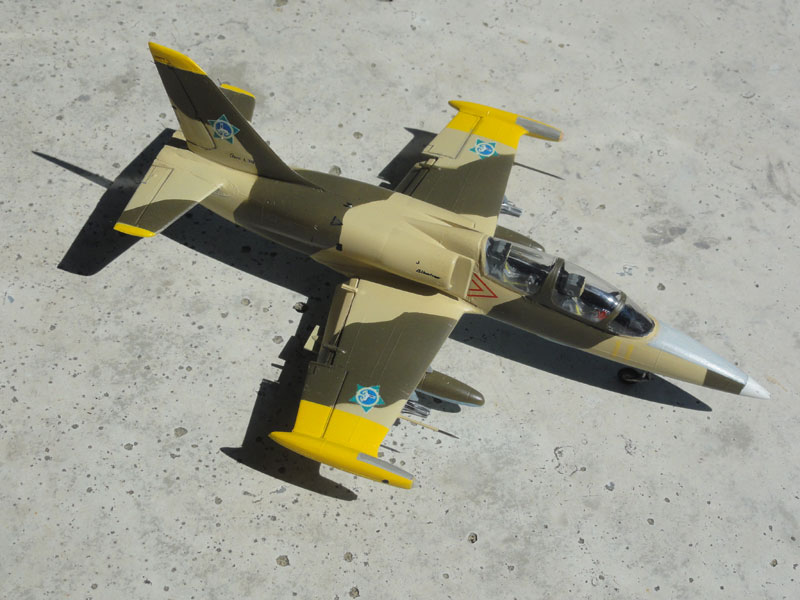

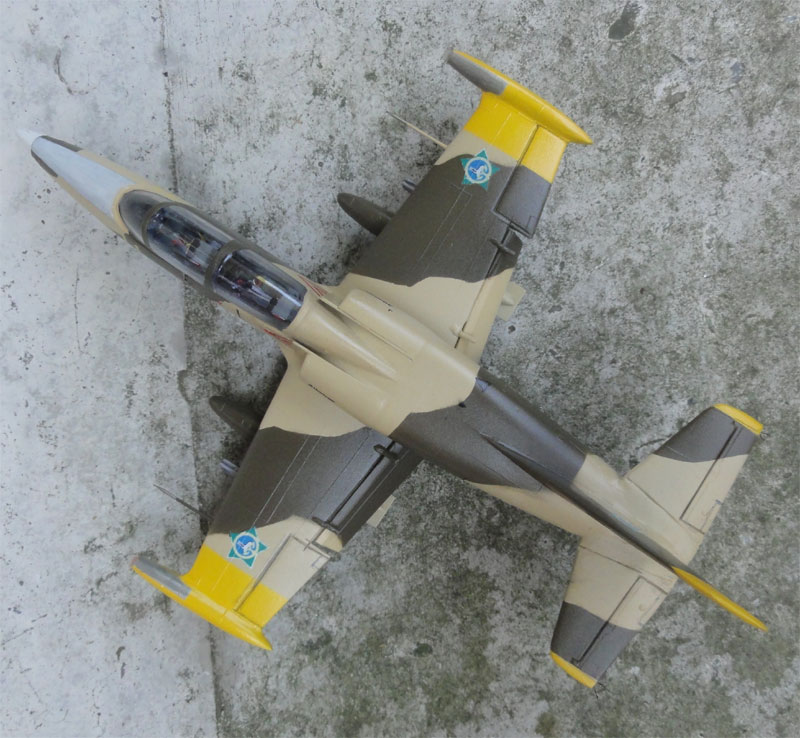

L-39C
Chechnya Air Force (mid nineties)
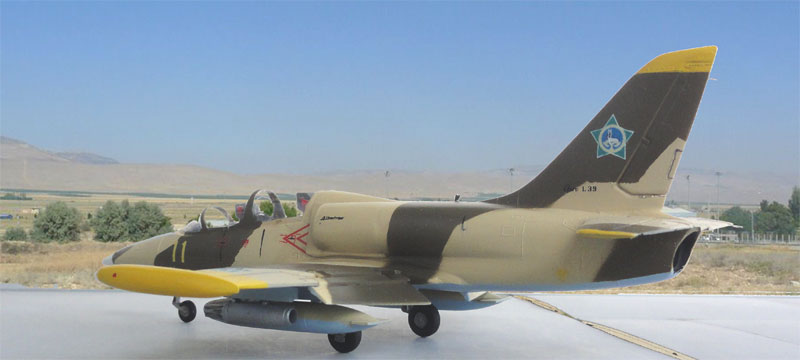
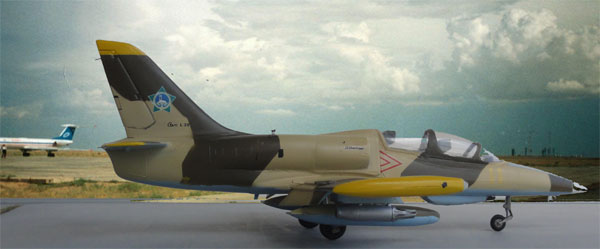
Another special model in the
World Air Forces collection....
.
(c) Copyright Meindert "designer"/ All rights reserved. Your comments are welcomed by webmaster
Created this page
May 25, 2016
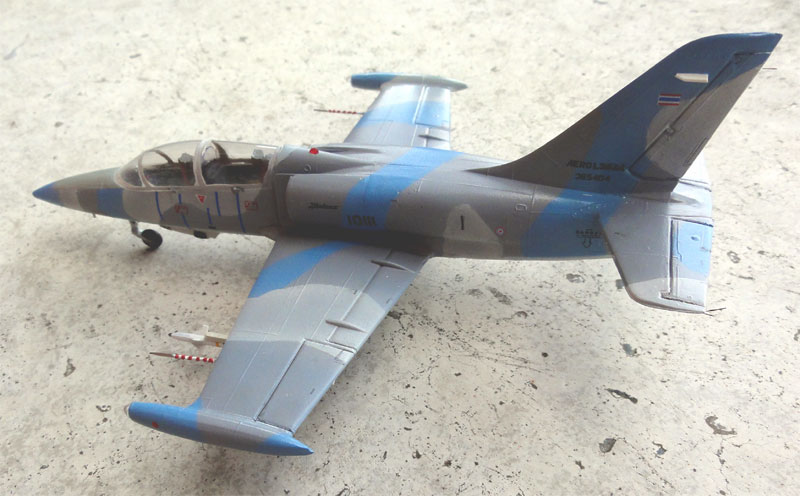
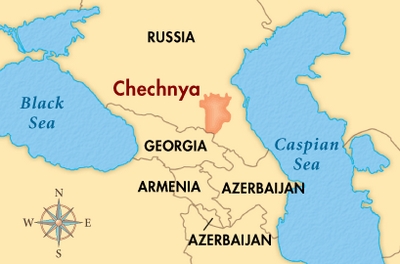 ...
...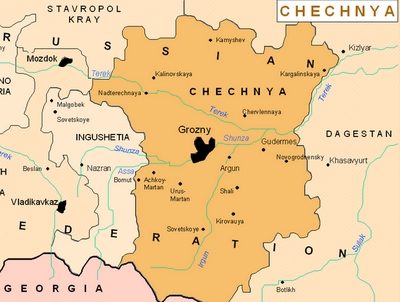
 .
.  ...
...
...
...